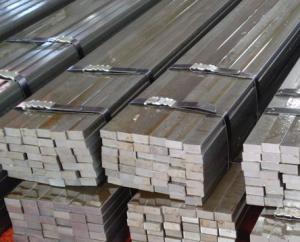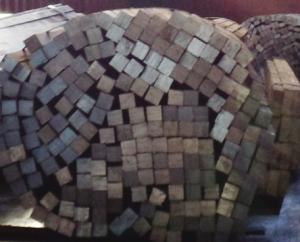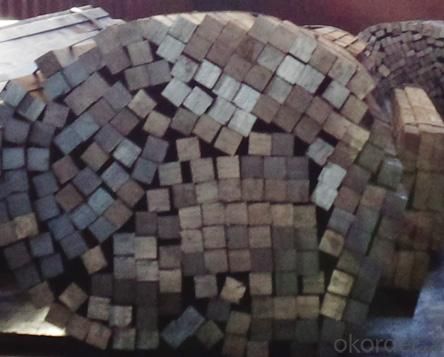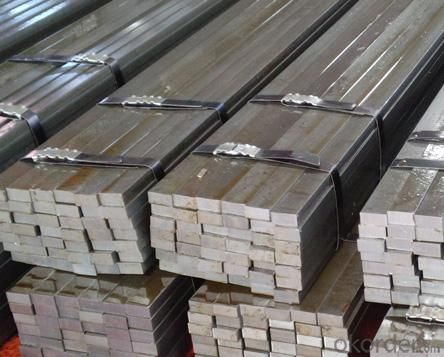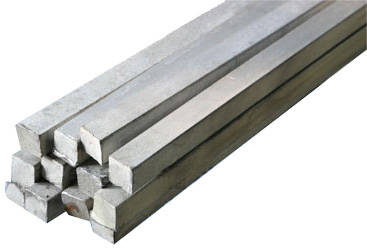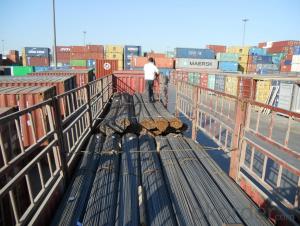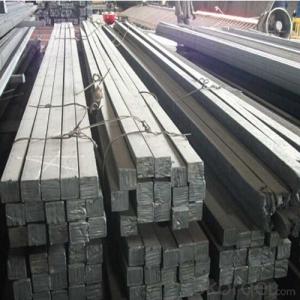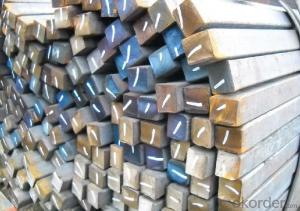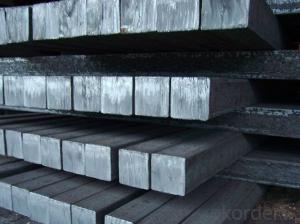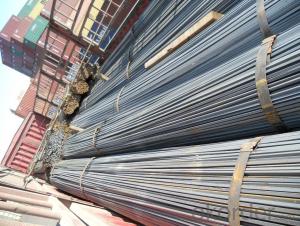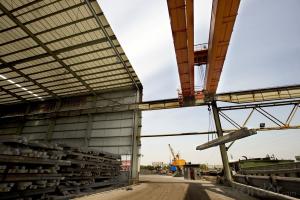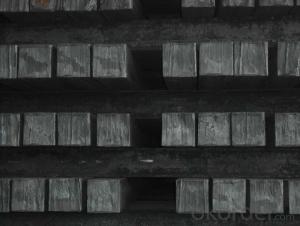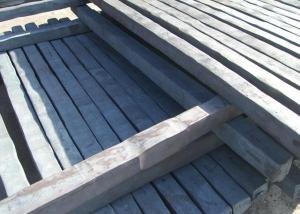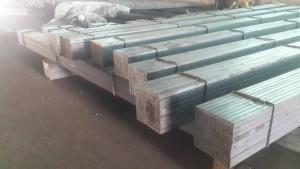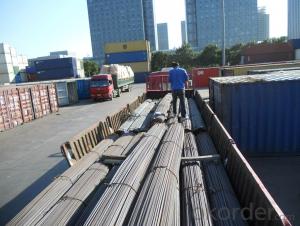Hot Rolled Stainless Steel Square Bar
- Loading Port:
- China Main Port
- Payment Terms:
- TT or LC
- Min Order Qty:
- -
- Supply Capability:
- 1000 tons per month m.t./month
OKorder Service Pledge
Quality Product, Order Online Tracking, Timely Delivery
OKorder Financial Service
Credit Rating, Credit Services, Credit Purchasing
You Might Also Like
the Hot Rolled Stainless Steel Square Bar is hot rolled, range from 5mm to 100mm,
Grade: Q195 Q235 and equivalent.
the monthly production capacity can be 500-1000 tons
it is used as structure steel.
the MOQ is usually 50 tons
canbe delivered by bulk vessel or by container.
- Q: What are some common applications for a steel square in woodworking?
- A steel square, also known as a framing square or carpenter's square, is a versatile and essential tool in woodworking. It is primarily used to ensure accuracy and squareness in various woodworking tasks. Here are some common applications for a steel square: 1. Checking for squareness: One of the main uses of a steel square is to check if a corner or joint is perfectly square. It allows woodworkers to ensure that their projects are aligned properly, preventing any issues with stability or aesthetics. 2. Marking and measuring: The square's long blade and tongue, along with the marked scales, enable precise measurements and marking of straight lines. It is particularly useful for marking cut lines, angles, and notches, ensuring accuracy during cutting and shaping processes. 3. Determining angles: Steel squares often come with angle scales that allow woodworkers to accurately measure and mark different angles. This is helpful when creating angled cuts, miter joints, or bevels on wood pieces. 4. Laying out staircases: When building or repairing staircases, a steel square is invaluable for marking the rise and run of each step. It aids in ensuring consistency and uniformity, resulting in safe and functional staircases. 5. Checking stock alignment: Woodworkers frequently use steel squares to verify the straightness and flatness of stock. By placing the square against the edge or face of a piece of wood, they can quickly identify any irregularities and make necessary adjustments. 6. Checking saw blade alignment: A steel square can be used to check the alignment of a table saw blade or miter saw by placing it against the blade and the saw's fence. This helps ensure accurate and parallel cuts, minimizing waste and improving the overall quality of the workpiece. 7. As a cutting guide: Steel squares can act as a reliable cutting guide when used in conjunction with a circular saw or jigsaw. By clamping the square to the material, woodworkers can achieve straight and accurate cuts along the edge of the square. 8. Creating perpendicular lines: Steel squares are ideal for drawing perpendicular lines on wood surfaces, such as when marking out mortises, tenons, or dowel holes. The square's 90-degree angle allows for precise alignment and ensures that the workpiece is properly squared. In summary, a steel square is an essential tool in woodworking that is used for checking squareness, marking and measuring, determining angles, laying out staircases, checking stock alignment, verifying saw blade alignment, acting as a cutting guide, and creating perpendicular lines. Its accuracy and versatility make it indispensable for woodworkers of all skill levels.
- Q: Can a steel square be used for foundation leveling?
- Foundation leveling can be achieved with the use of a steel square. A steel square is a versatile tool commonly found in construction and carpentry, serving various purposes such as measuring, marking, and ensuring precision. In the context of foundation leveling, a steel square can be employed to assess the levelness and alignment of the foundation walls or footings. By placing the steel square against the foundation surface and employing a level, one can determine whether the foundation is straight and level or if adjustments are necessary. However, it is essential to acknowledge that although a steel square can provide a general indication of the foundation's levelness, more accurate leveling measurements often require the utilization of tools like laser levels or transit levels.
- Q: Can a steel square be used for measuring distances?
- No, a steel square cannot be used for measuring distances as it is primarily a tool for measuring and marking right angles in woodworking and carpentry.
- Q: How do you use a steel square to check for levelness on a countertop?
- To use a steel square to check for levelness on a countertop, place the square on different areas of the countertop, ensuring that it lies flat against the surface. If the square sits flush against the countertop without any gaps or wobbling, then the countertop is level. If there are gaps or the square does not lie flat, it indicates that the countertop is not level and may require adjustments or leveling.
- Q: Can a steel square be used for checking the squareness of a router table fence?
- Indeed, a router table fence's squareness may be assessed using a steel square. This tool, known for its dependability in angle measurement and guaranteeing the perpendicularity of two surfaces, proves useful. To evaluate the squareness of the router table fence, effortlessly position the steel square against both the fence and the table surface, ensuring a seamless fit against each. If the steel square flawlessly forms a 90-degree angle with both the fence and table, it signifies the fence's squareness. In the event of any disparity or a non-90-degree angle, appropriate adjustments can be made to correctly align the fence.
- Q: How do you use a steel square to determine the pitch of a roof?
- To use a steel square to determine the pitch of a roof, you will need to follow these steps: 1. Start by positioning the steel square on the roof surface. Place the long side of the square against the roof surface, with one of the shorter sides extending vertically. 2. Make sure the square is level by using a bubble level or by visually aligning it with the horizontal reference point on the roof. 3. Once the square is level, take a measurement on the vertical side of the square. This measurement represents the rise or the vertical distance from the horizontal reference point to the highest point of the roof. 4. Next, take a measurement on the horizontal side of the square. This measurement represents the run or the horizontal distance from the highest point of the roof to the horizontal reference point. 5. Finally, use these measurements to determine the pitch of the roof. The pitch is typically expressed as a ratio of rise over run. For example, if the rise is 6 inches and the run is 12 inches, the pitch would be 6:12 or simplified to 1:2. By using a steel square and measuring the rise and run, you can accurately determine the pitch of a roof. This information is crucial for various construction and roofing projects as it helps in estimating materials, planning drainage systems, and ensuring proper installation.
- Q: Can a steel square be used for checking the squareness of window openings?
- Window openings can have their squareness checked using a steel square. This tool, also referred to as a framing square or carpenter's square, is highly versatile in carpentry and construction. It serves various purposes, including the examination of object squareness. When applied to window openings, the steel square guarantees that the corners of the window frame align perfectly at 90-degree angles. By positioning the steel square against the window opening's corners, one can effortlessly determine if adjustments are needed. The precise right angles and straight edges of the steel square establish it as a dependable tool for assessing window opening squareness and ensuring accurate installation.
- Q: How do you use a steel square to ensure the correct angle for a half-lap joint?
- Achieving the correct angle for a half-lap joint can be ensured by following these steps, utilizing a steel square: 1. Begin by marking the desired depth of the half-lap joint on both pieces of wood that will be joined together. This can be accomplished by measuring and marking the depth on the edge of each piece. 2. Position the steel square at the end of one of the wood pieces, aligning it with the edge and ensuring the inside corner of the square faces the end of the wood. 3. Trace along the inside edge of the steel square using a pencil or marking knife. This will produce a straight and squared line across the wood's end. 4. Repeat the above process on the other piece of wood, ensuring alignment of the lines when the two pieces are joined together. 5. With the lines marked, employ a handsaw or chisel to remove the material between them on both pieces of wood. It is crucial to cut accurately along the lines to achieve a snug and precise fit. By utilizing a steel square for line marking, the angles of the half-lap joint can be verified, and the joint can be accurately assembled. The steel square functions as a guide, enabling the creation of straight and squared lines, simplifying the attainment of the desired joint angle.
- Q: How accurate are steel squares for measuring angles?
- Steel squares, renowned for their precision and adherence to strict standards, offer exceptional accuracy in angle measurement. Nevertheless, external factors like wear and tear, misuse, or manufacturing defects may impact their precision. Thus, regular checks and calibrations are crucial to uphold their accuracy. All in all, when utilized correctly and maintained diligently, steel squares prove themselves as highly reliable instruments for measuring angles.
- Q: How is a steel square used in woodworking?
- A steel square is primarily used in woodworking as a versatile measuring and marking tool. It helps in checking right angles, determining squareness, and laying out precise measurements on wood pieces.
STEXIN, an enterprise specializing in the production and sales of square bar, round bar and flat bar. The annual production capacity of square billet is 60,000 mtons, and sturtual steel 80,000 mtons.
1. Manufacturer Overview
| Location | Renqiu, China |
| Year Established | 1996 |
| Annual Output Value | Above US$ 30 Million |
| Main Markets | Mid East; Southeast Aisa |
| Company Certifications |
2. Manufacturer Certificates
| a) Certification Name | |
| Range | |
| Reference | |
| Validity Period |
3. Manufacturer Capability
| a) Trade Capacity | |
| Nearest Port | Tianjin; |
| Export Percentage | 20% - 30% |
| No.of Employees in Trade Department | 11-20 People |
| Language Spoken: | English; Chinese |
| b) Factory Information | |
| Factory Size: | Above 70,000 square meters |
| No. of Production Lines | 1 |
| Contract Manufacturing | OEM Service Offered |
| Product Price Range | Average |
Send your message to us
Hot Rolled Stainless Steel Square Bar
- Loading Port:
- China Main Port
- Payment Terms:
- TT or LC
- Min Order Qty:
- -
- Supply Capability:
- 1000 tons per month m.t./month
OKorder Service Pledge
Quality Product, Order Online Tracking, Timely Delivery
OKorder Financial Service
Credit Rating, Credit Services, Credit Purchasing
Similar products
Hot products
Hot Searches
Related keywords
